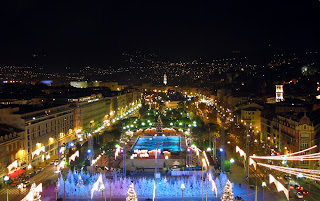In France, different regions of the nation celebrate Christmas differently, and even at different times. Most provinces recognized and celebrate Christmas on December 25th, but in northern and eastern regions of France, the Christmas season is officially begun on the 6th day of December. La fete de Saint NIcolas, la fete des Rois, and la Fete de lumieres, honor Saint Nicholas, the Epiphany, and the Virgin Mary. These holidays are special parts of the French Christmas season.
Children in France don't hang stockings by the chimney, they place their shoes in front of the fireplace for Pere Noel to fill with gifts. Candy, fruits and nuts, and toys are also hung on the tree Christmas Eve night. Pere Fouettard, who is basically Santa's Counterpart, gives out spankings to naughty boys and girls.
In 1962, France passed a law requiring all letters written to Pere Noel, to receive a response, so Santa sends each child a postcard acknowledging their letter and wishing them a happy holiday season.
La Messe de Minuit (Midnight Mass) on Christmas Eve is an important part of Christmas for many families, and is followed by a grand feast. This feast is called le Revellion is meant to be a symbolic awakening to the glory and miracle of the birth of Jesus Christ. Many restaurants and cafes stay open all night to serve this meal. Each French region has it's own traditional sajian ranging from turkey, goose, and chicken to a dish similar to white pudding, called boudin blanc.
Traditional dessert foods include la buche de Noel ( Yule log cake made with chocolate and chestnuts), le pain calendeau (Christmas loaf, which is shared with a less fortunate person), and la Galette des Rois (round cake that is cut and handed out by a child hiding under the table. There is a charm hidden inside, and whoever finds it is King or Queen during the celebration of Epiphany.
The sapin de Noel (or Christmas Tree) is a similar traditional decoration in homes and businesses, as well as town squares. Lights and candles are common, but candles are used more in France than in America, to gaji the Virgin Mary. After the Awakening, it is customary to leave a candle burning in case Mary should pass by.
displayed in churches and homes. Living nativity's are commonly performed to remind those in attendance that Christmas is a celebration of the birth of Jesus Christ and the miracles surrounding that birth.






Comments
Post a Comment